May 23, 2023
7:48 PM
By OrgChart Team

In the HR landscape, managing and visualizing talent data is crucial. Organizational charts help HR professionals effectively recruit, retain, and develop a talented workforce. Companies invest heavily in collecting and managing this talent data, and properly leveraging it can lead to more informed business decisions.
OrgChart solutions offer an efficient way to transform complex talent data into clear, concise visualizations. At a glance, HR professionals can comprehend the recruitment status for open positions, and easily identify areas where more focused efforts might be required. Beyond recruitment, OrgChart’s ability to aggregate data from multiple sources allows you to create custom metrics that provide insights into succession planning, retention, leadership development, and more.
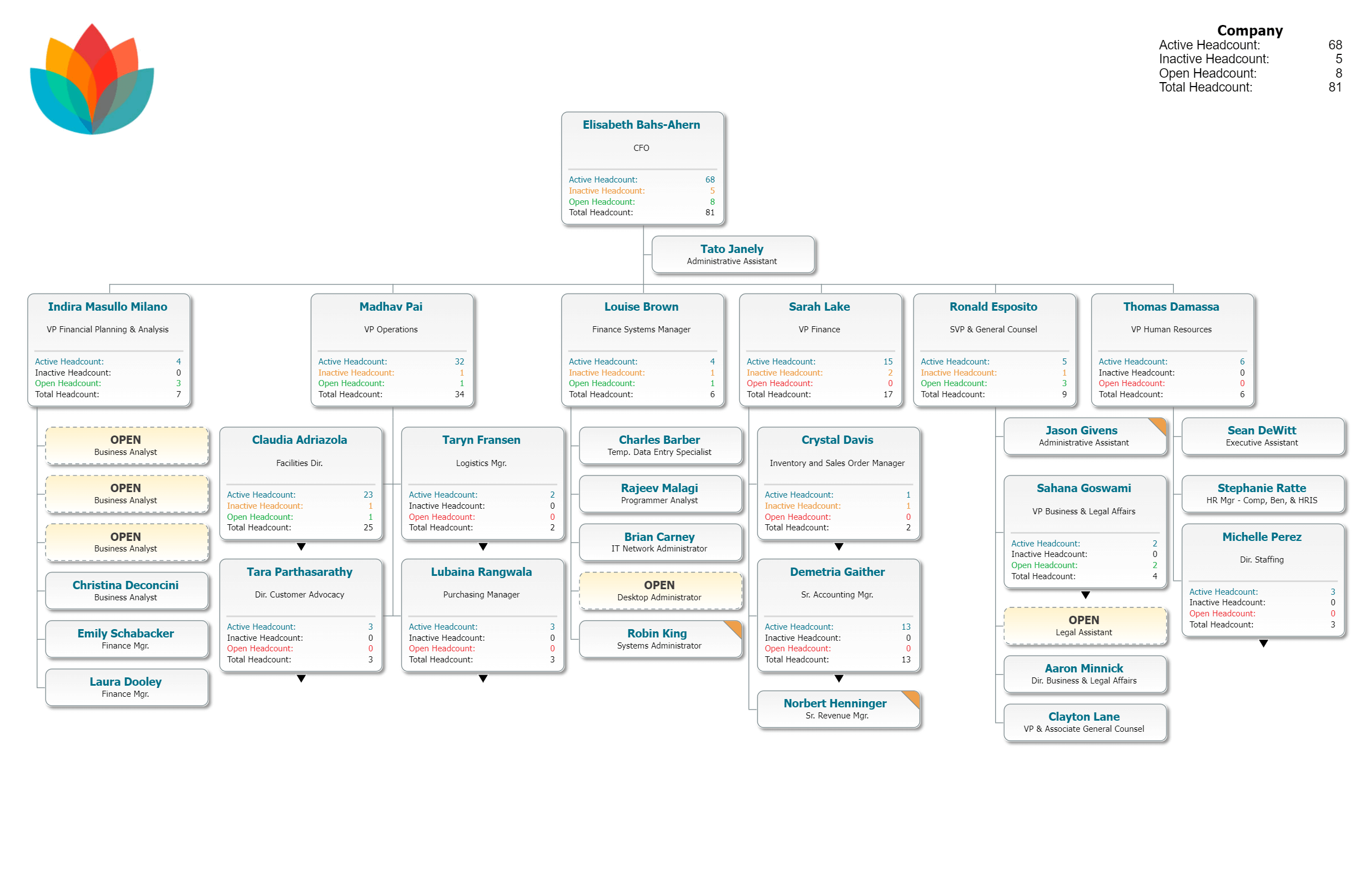
Talent visualization is a game-changer for HR professionals, offering a multitude of benefits that drive recruitment and succession planning strategies to new heights. With org chart software at your disposal, you can harness the power of talent visualization to revolutionize your approach. Let’s explore the transformative advantages that await you.
OrgChart empowers HR professionals to map competencies directly to high-potential employees, unlocking valuable insights into the skillsets and capabilities within an organization. By visually connecting competencies to individuals, you can identify and nurture talent that aligns perfectly with strategic objectives. This strategic alignment drives more effective recruitment efforts, ensuring you attract and retain top performers who possess the right skills to fuel your organization’s success.
In the competitive landscape of talent acquisition, having a clear understanding of your recruitment strategy is essential. OrgChart enables you to visualize your current and future open positions, as well as identify which positions have been difficult to fill, so that you know where to focus your efforts for maximum efficiency.
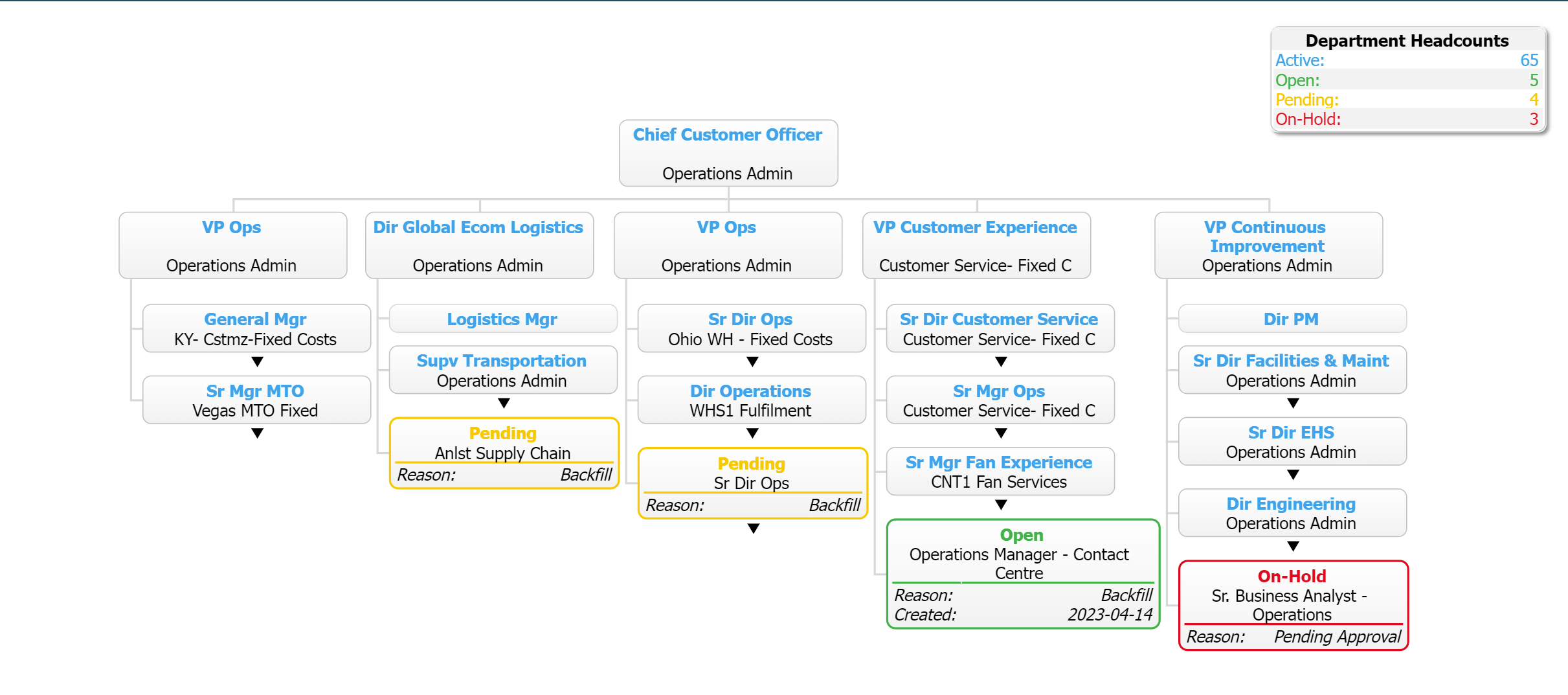
With OrgChart, HR professionals gain the ability to observe potential ratings and performance insights effortlessly. The intuitive platform provides a holistic view of employee potential, allowing you to identify high performers, emerging leaders, and areas for growth within your organization. This invaluable information enables you to make data-driven decisions regarding succession planning, talent development initiatives, and resource allocation, ensuring you optimize your workforce to meet current and future business needs.
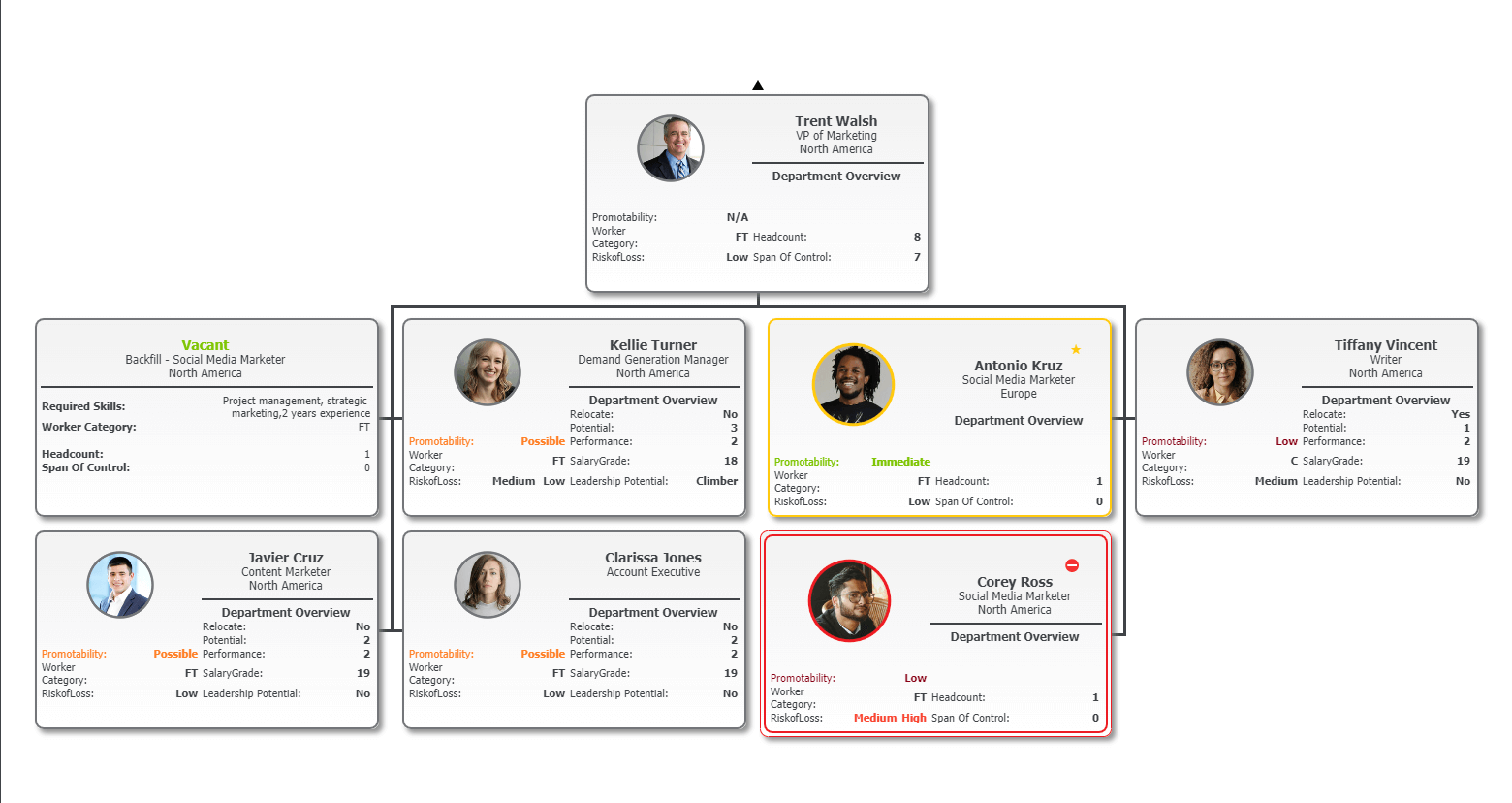
OrgChart solutions offer unmatched speed and flexibility when it comes to creating and customizing organizational charts. HR professionals can easily generate dynamic charts that accurately represent the structure and relationships within their organization. Whether you need to visualize reporting lines, team structures, or departmental hierarchies, OrgChart empowers you to create visually compelling and insightful charts in a matter of minutes. This streamlined process not only enhances data visibility but also facilitates effective communication and collaboration across your organization.
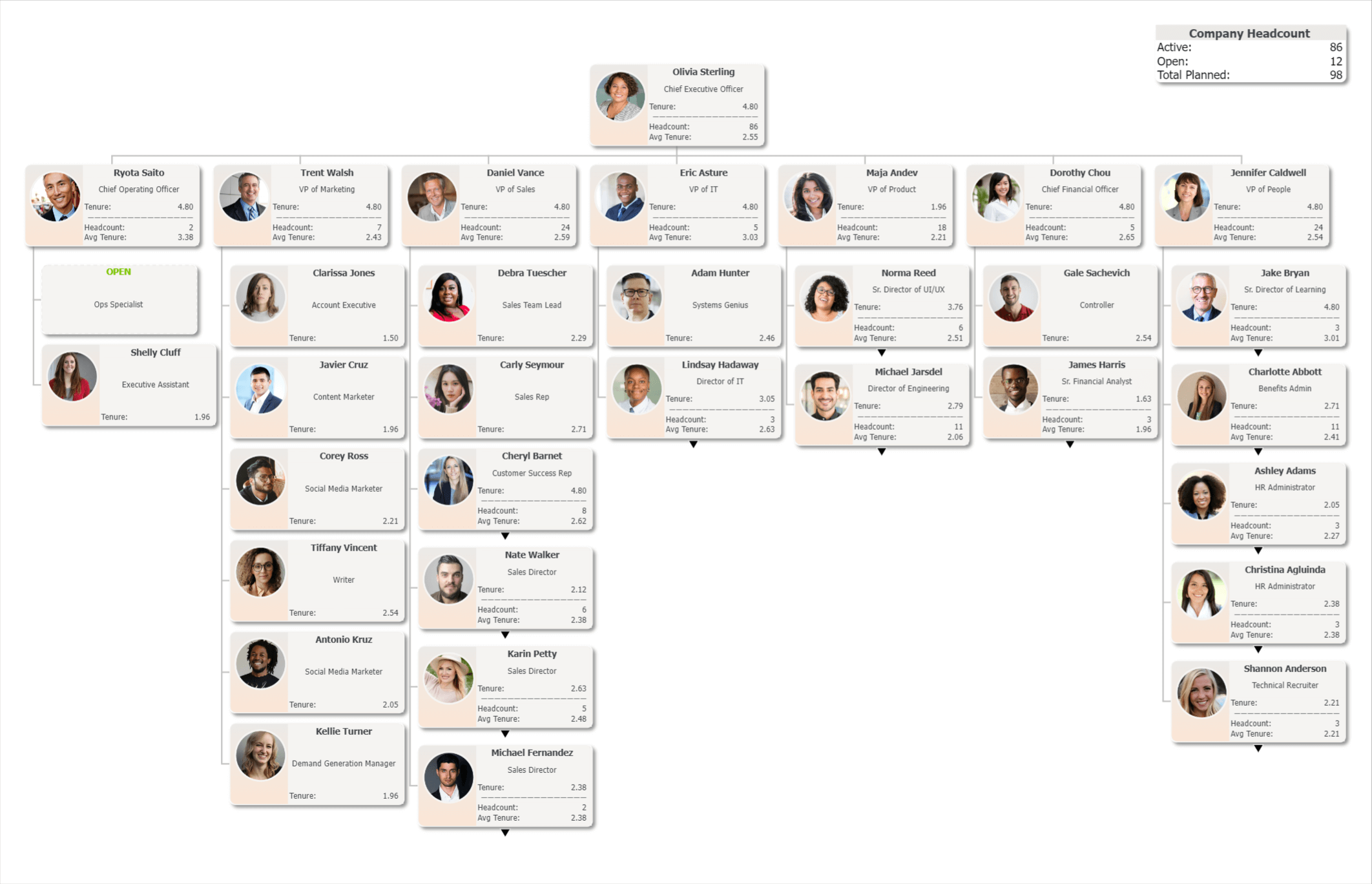
Succession planning is a critical component of talent management, ensuring the seamless transition of key roles and the continuity of business operations. OrgChart solutions take succession planning to the next level by providing a robust framework for identifying and nurturing internal talent. With a clear visualization of your talent pool, including their competencies, potential ratings, and performance insights, you can proactively identify potential successors and create targeted development plans to prepare them for future leadership roles. By aligning succession planning with your talent visualization efforts, you establish a pipeline of capable leaders, mitigating the risks associated with key personnel changes and empowering your organization to thrive.
OrgChart’s feature-rich platform allows complete presentation control, enabling the creation of charts with specific metrics and data points for clear communication. This can be valuable in showing diverse data, retirement planning, or an “at a glance” grid of employee performance.
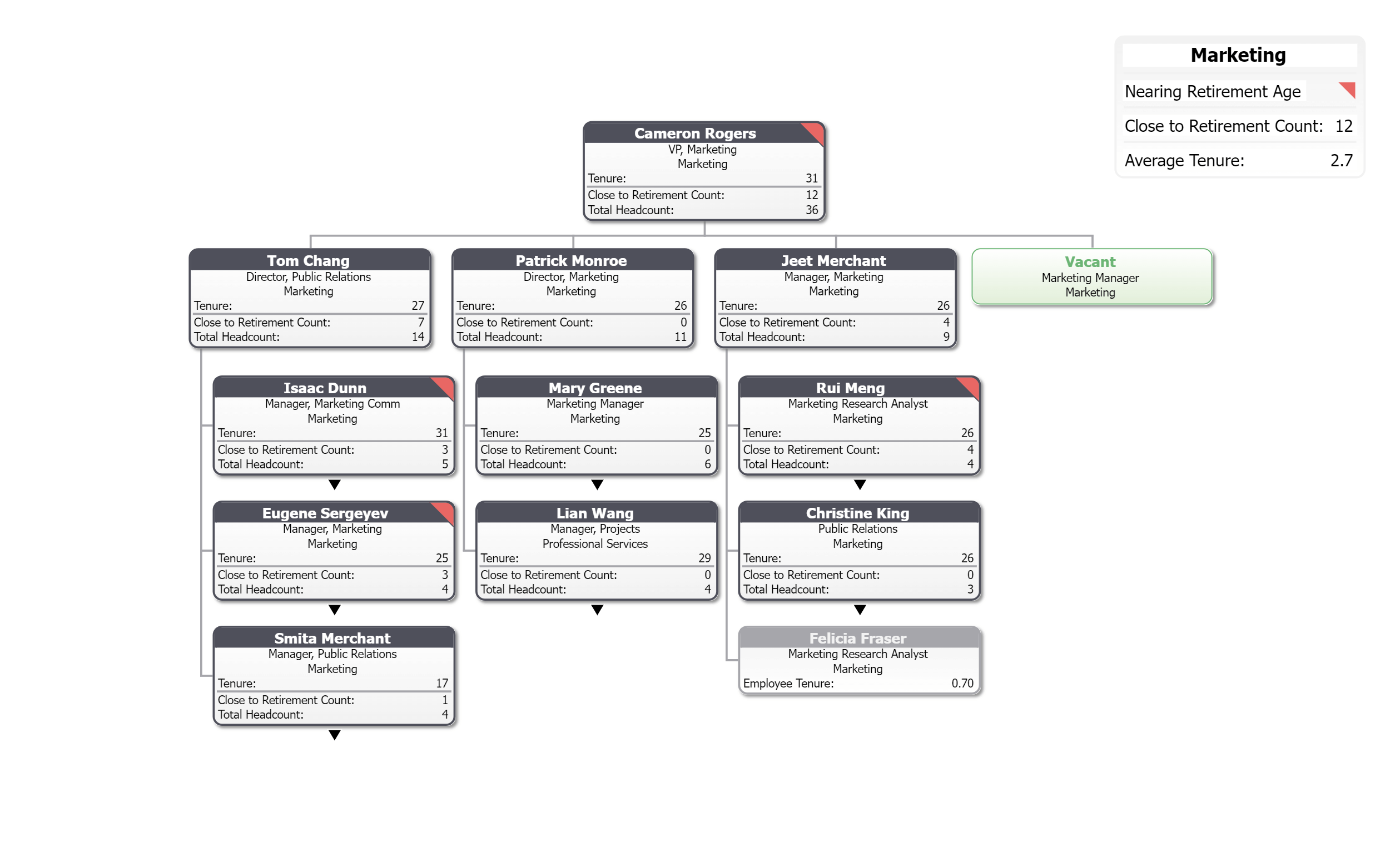
Security is also paramount. OrgChart emphasizes data protection with conditional formatting and sophisticated publishing options. These features let you instantly visualize changes, such as identifying high performers or flight risks, and securely share charts on the web or output to formats like PDF, PowerPoint, Dropbox, SharePoint, and OneDrive.
Effective talent management is key to maintaining a competitive edge. HR professionals can harness OrgChart solutions for precise talent visualization and making informed decisions in recruitment, succession planning, or performance management. This allows for the strategic planning necessary to attract, cultivate, and retain top talent, ultimately driving organizational success and growth.
By leveraging OrgChart solutions, HR professionals gain a robust tool for planning and implementing talent management strategies, creating a resilient workforce equipped to succeed in today’s competitive business environment.
You should understand your strategic priorities and formulate clear objectives for an effective talent-management strategy. Developing a talent-management framework and process while prioritizing impactful practices and employee development is essential. Also, remember to monitor your progress, utilize technology to streamline your efforts, and regularly evaluate and modify your approach for the best results.
Remember, no universal talent management strategy fits all organizations. What works well for one may not work for yours, hence the importance of developing a strategy that suits your organizational needs.
Request an OrgChart demo today to learn more about how org chart creation should be the best part of talent management.

Talent management comprises HR activities geared towards attracting, integrating, cultivating, stimulating, and retaining high-performance employees. The ultimate objective is to amplify business performance through initiatives that heighten workforce efficiency and productivity, aligning them with the company’s aims.
Although both are vital HR components, talent management, and development cater to distinct areas. Talent management is centered on identifying, recruiting, and retaining employees who can significantly contribute to an organization’s triumphs. Conversely, talent development focuses on enhancing employees’ proficiencies and knowledge base, helping them attain their maximum potential and equipping them for future roles within the organization.
The best practices in talent management span a wide range, including strategic workforce planning, proficient talent acquisition, comprehensive onboarding, performance management, career progression planning, succession mapping, advocating for diversity and inclusion, and nurturing a culture of continuous advancement to manage talent competently.
Unquestionably, talent management forms a crucial part of HR. It strategically manages a company’s human resources to achieve business goals, ensuring the right talent is stationed at the right place at the opportune time to propel business success.
Companies that adopt a robust talent management strategy often reap several advantages. They may witness high employee performance and productivity, reduced turnover rates, and heightened employee engagement. Furthermore, a solid talent management system can help businesses identify potential leaders and formulate a succession blueprint.
Contemporary talent management leans heavily on technology. Software solutions can aid HR professionals in effectively performing tasks such as monitoring employees’ performance, managing compensation and benefits, and streamlining the recruitment and onboarding processes. Additionally, advanced analytics can yield valuable insights into workforce trends, facilitating informed decision‑making.
The structure of talent management teams may vary based on an organization’s size and requirements, typically comprising professionals responsible for different areas such as performance management, recruitment, training, development, and succession planning. These roles may be delegated to separate teams under the more comprehensive HR department in larger entities.
Organizational culture and talent management share a deep-rooted connection. A positive culture can augment talent management endeavors by luring high-caliber candidates and improving retention rates. Conversely, efficient talent management can foster a culture of continuous learning, evolution, and high organizational performance.
Typical challenges in talent management encompass identifying the right talent, retaining top performers, and planning for leadership succession. To address these, organizations can focus on cultivating an engaging workplace ambiance, offering consistent training and development opportunities, acknowledging and rewarding employee accomplishments, and establishing a transparent and efficient succession planning strategy.
As an HR professional, you must understand your organization’s current form, in order to effectively position it for future success. In a world where talent management becomes more complex and vital to organizational success, you need the right tools to drive your strategic vision forward.
OrgChart is here to help you unlock the potential of your org chart like never before. You can visualize your organization, gain talent insights, and facilitate workforce planning, all within a single, intuitive platform.
OrgChart isn’t just about creating visually engaging charts. It goes beyond that to offer visibility, insight, and vision crucial for today’s HR professionals. With OrgChart, you can model future organizational changes, track key metrics, set goals, and align your organizational structure with your strategic goals.
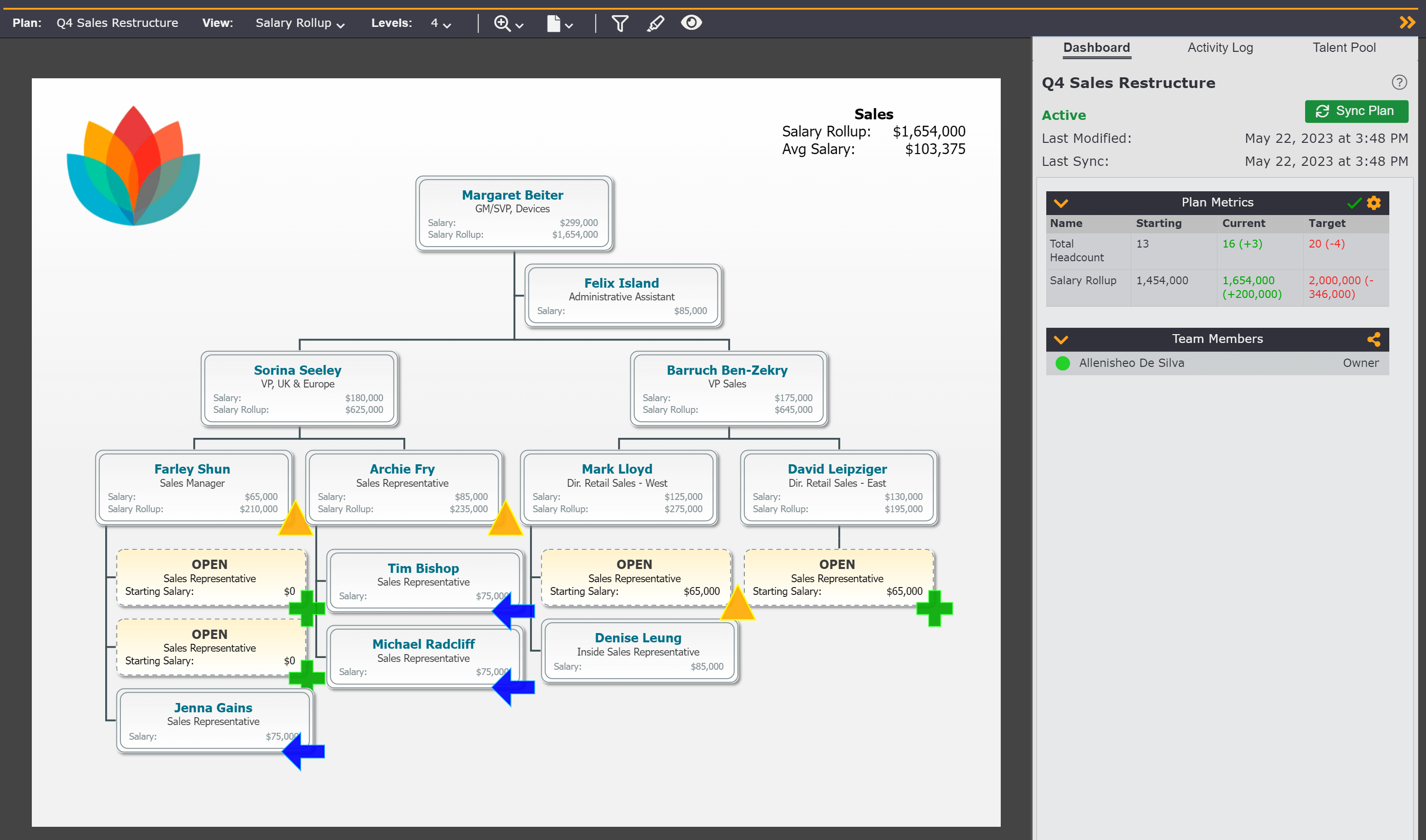
You’ll have an accurate view of your current state, be able to track the metrics you care about, and quickly spot gaps. All your people-related data is combined in one place for an always-accurate view of your organization. But we don’t stop there. We give you the tools to plan for the future, modeling future changes and their impact, creating custom metrics and setting goals, and helping you collaborate with key stakeholders to develop actionable future workforce plans.
From detailed visibility into your organization, to critical insights gleaned from your people-related data, OrgChart aids you in navigating through this crucial process in the HR professional’s role.
But we don’t just want to give you tools. We want to be your partner, an indispensable aid in your HR toolbox. We’re purpose-built with HR professionals in mind and designed to grow with your organization, no matter how big or complex it becomes.
Make the most of your org chart. Leverage your people data, maximize workforce planning, and help your organization reach its full potential with OrgChart. So, why wait? Let’s start this journey together. Request an OrgChart quote today!
Tags: